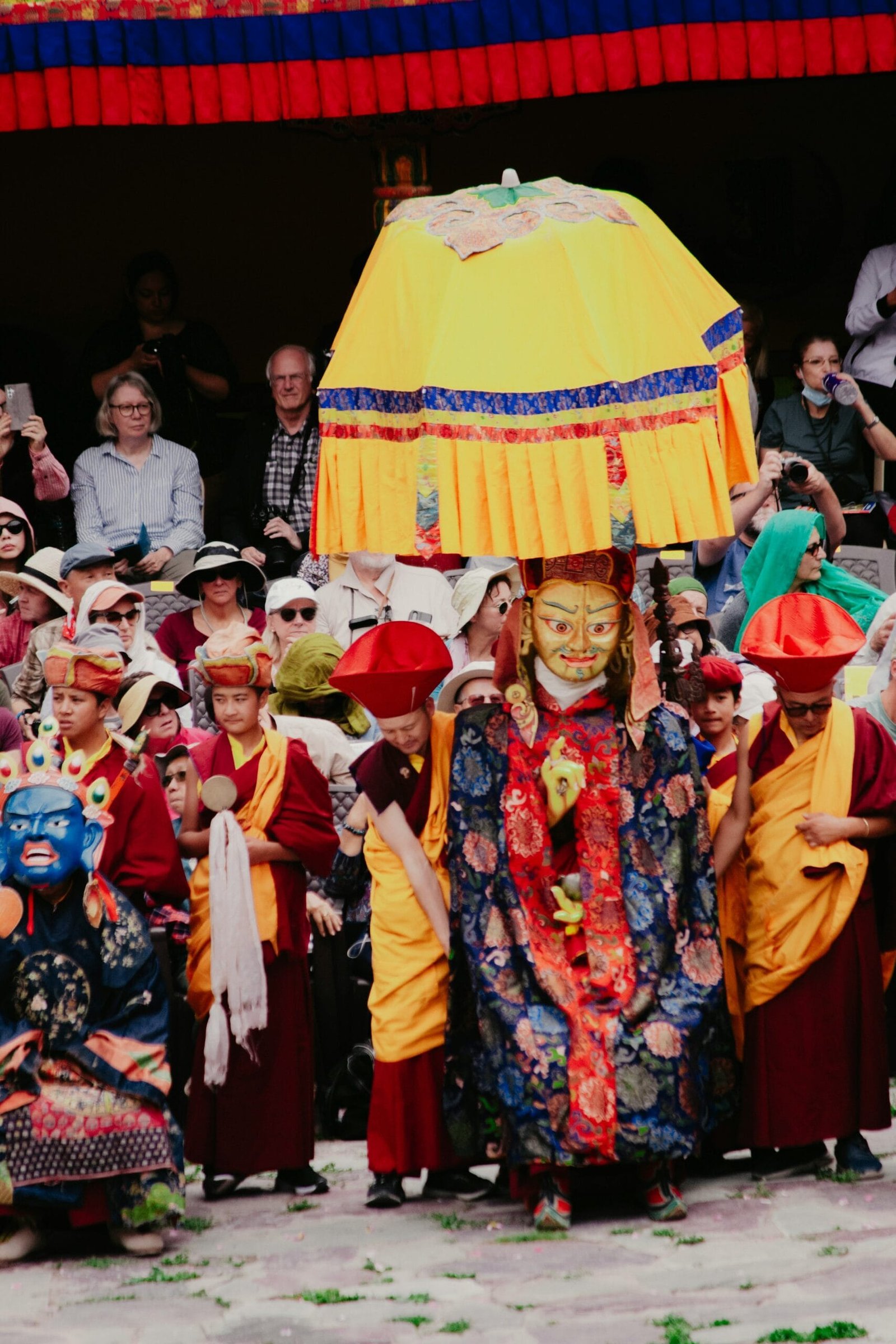The Origins and Evolution of Tibetan Buddhism
Tibetan Buddhism has a rich and complex history that traces its roots back to the introduction of Indian Buddhism into Tibet during the 7th century. It emerged as a distinct spiritual tradition after King Songtsen Gampo invited Indian scholars and practitioners, bringing with them the teachings of the Buddha. This initial contact laid the foundation for what would develop into Tibetan Buddhism, characterized by its unique synthesis of various influences.
One of the hallmark features of Tibetan Buddhism is its integration of Mahayana Buddhist principles, which emphasize compassion and the pursuit of enlightenment not only for oneself but for all beings. This philosophical outlook aligns harmoniously with indigenous Bon practices and local rituals that were already present in Tibet prior to the arrival of Buddhism. As a result, Tibetan Buddhism became a tapestry woven with diverse threads incorporating cultural, spiritual, and philosophical elements from various sources.
Key figures played a pivotal role in the evolution of Tibetan Buddhism. Among them, Padmasambhava, an Indian master who is often regarded as the second Buddha, was instrumental in establishing the Nyingma school. His efforts to safeguard and propagate the teachings of Buddhism included the establishment of oral traditions, meditation practices, and rituals that resonate with the Tibetan people to this day. Another significant figure, Atisha, arrived in the 11th century and was vital in reforming and consolidating various Buddhist practices. His teachings focused on the importance of moral discipline and the intent behind actions, leading to the development of the Kadampa school.
Throughout the centuries, Tibetan Buddhism has been shaped by various political and cultural influences. The establishment of the Tibetan Empire, along with the subsequent fragmentation of political power, allowed different schools of thought to emerge and flourish. Today, Tibetan Buddhism encompasses a rich array of practices and beliefs, marking a dynamic evolution that reflects its historical and cultural journey.
Core Beliefs and Philosophical Foundations
Tibetan Buddhism is rich in its philosophical foundations and core beliefs, encompassing profound concepts such as compassion (karuna), wisdom (prajna), and the understanding of reality through the lens of emptiness (shunyata). At the heart of these beliefs is the idea that all sentient beings possess the potential for enlightenment, underscoring a commitment to fostering compassion and empathy. Compassion is not merely an emotional response; it is a practiced discipline aimed at alleviating the suffering of others as part of one’s own spiritual path.
Wisdom, or prajna, represents the clarity of understanding that arises when one perceives the true nature of existence. Within Tibetan Buddhism, this wisdom is not an intellectual exercise but a profound experiential insight that reveals the interconnectedness of all life. This perspective forms a crucial component in the journey towards enlightenment, as discerning the illusory nature of self and phenomena allows practitioners to let go of attachment and ego-centric views. By nurturing wisdom alongside compassion, individuals cultivate a more profound understanding of both themselves and the world around them.
Central to Tibetan Buddhist philosophy is the bodhisattva ideal, which embodies the aspiration to attain enlightenment not just for oneself but for the benefit of all beings. This selfless commitment reflects the deep-rooted belief in the interdependence of existence. Practitioners are called to embrace this ideal, engaging in various practices that enhance their ability to help others on their spiritual journeys. Furthermore, Tibetan Buddhism incorporates unique interpretations of traditional Buddhist texts, enriching its teachings and providing a diverse framework for spiritual development. These texts illuminate the path towards realizing emptiness, which is essential for overcoming ignorance and suffering. Ultimately, the intricate blend of compassion, wisdom, and the bodhisattva aspiration form the essence of Tibetan Buddhism’s core beliefs and philosophical foundations, guiding followers in their quest for enlightenment.
Rituals, Tantric Practices, and Meditation Techniques in Tibetan Buddhism
Tibetan Buddhism is characterized by its intricate rituals and diverse practices, which play a pivotal role in the spiritual development of its practitioners. A central aspect of these practices is Tantra, a tradition that integrates both ritual and meditation to facilitate profound spiritual insights. One of the most significant elements of tantric practices is deity visualization, where practitioners envision various Buddhist deities to cultivate specific qualities or to remove obstacles on their spiritual path. This path often includes the recitation of mantras, sacred syllables believed to embody the essence of the deities. The repetitive nature of mantra recitation serves not only to invoke the presence of the chosen deity but also to develop focused concentration, ultimately leading to an altered state of awareness.
Ritual offerings are another vital component of Tibetan Buddhist practices. These offerings can include food, flowers, or symbolic items, presented to the deities as a form of respect and gratitude. The act of offering is seen as a means of transcending the self-centered perspective, cultivating generosity and compassion towards others. Through these rituals, practitioners create a sacred space that enhances their meditative experience, reinforcing their connection with the divine.
Integral to these practices is the guru-disciple relationship, which holds particular significance in Tibetan Tantric Buddhism. The guidance of a qualified teacher is considered essential for navigating the complexities of tantric practices. This relationship enables disciples to receive teachings that are otherwise inaccessible, thus accelerating their spiritual growth. Furthermore, Tibetan Buddhism employs unique meditation techniques, including visualization exercises and specific breathing practices designed to deepen the meditator’s awareness. These methods foster mental clarity and stability and encourage spiritual insight, which is paramount for advancing in the journey of Tibetan Buddhism.
Tibetan Buddhism Today: Global Influence and Adaptation
Tibetan Buddhism has undergone significant evolution in the contemporary landscape, demonstrating resilience and adaptability in response to global challenges. With its rich traditions rooted in ancient practices, Tibetan Buddhism has transcended geographical boundaries, influencing numerous individuals and communities worldwide. This expansion has particularly resonated within the framework of Western spirituality, where aspects of Tibetan Buddhist philosophy have been integrated into modern mindfulness practices.
One notable contribution to the spread of Tibetan Buddhism in the West comes from prominent leaders such as the Dalai Lama and other lamas who have traveled extensively to share their teachings. By emphasizing concepts such as compassion, interdependence, and mindfulness, these figures have made profound impacts on various fields, including psychology and therapy, where mindfulness practices derived from Tibetan traditions have garnered acclaim.
Moreover, organizations such as the Tibetan Buddhist Centers and the Foundation for the Preservation of the Mahayana Tradition have played a pivotal role in disseminating these teachings. They provide educational resources, retreats, and ceremonies that foster a deeper appreciation of Tibetan Buddhism in both traditional and contemporary contexts.
However, Tibetan Buddhism is not without its challenges in the modern era. As it encounters the forces of globalization, concerns regarding political and cultural preservation have emerged, particularly in the wake of Tibetan autonomy and cultural identity under Chinese governance. The preservation of religious practices, language, and rituals amidst external pressures remains a significant focus for many Tibetan Buddhists globally.
In conclusion, the contemporary landscape of Tibetan Buddhism illustrates a dynamic interplay of cultural exchange and adaptation. While it faces obstacles, its ability to influence and reshape spiritual practices transcends borders, reinforcing its relevance in today’s society. Through the dedicated efforts of its leaders and organizations, Tibetan Buddhism continues to thrive and inspire a new generation of practitioners around the world.






